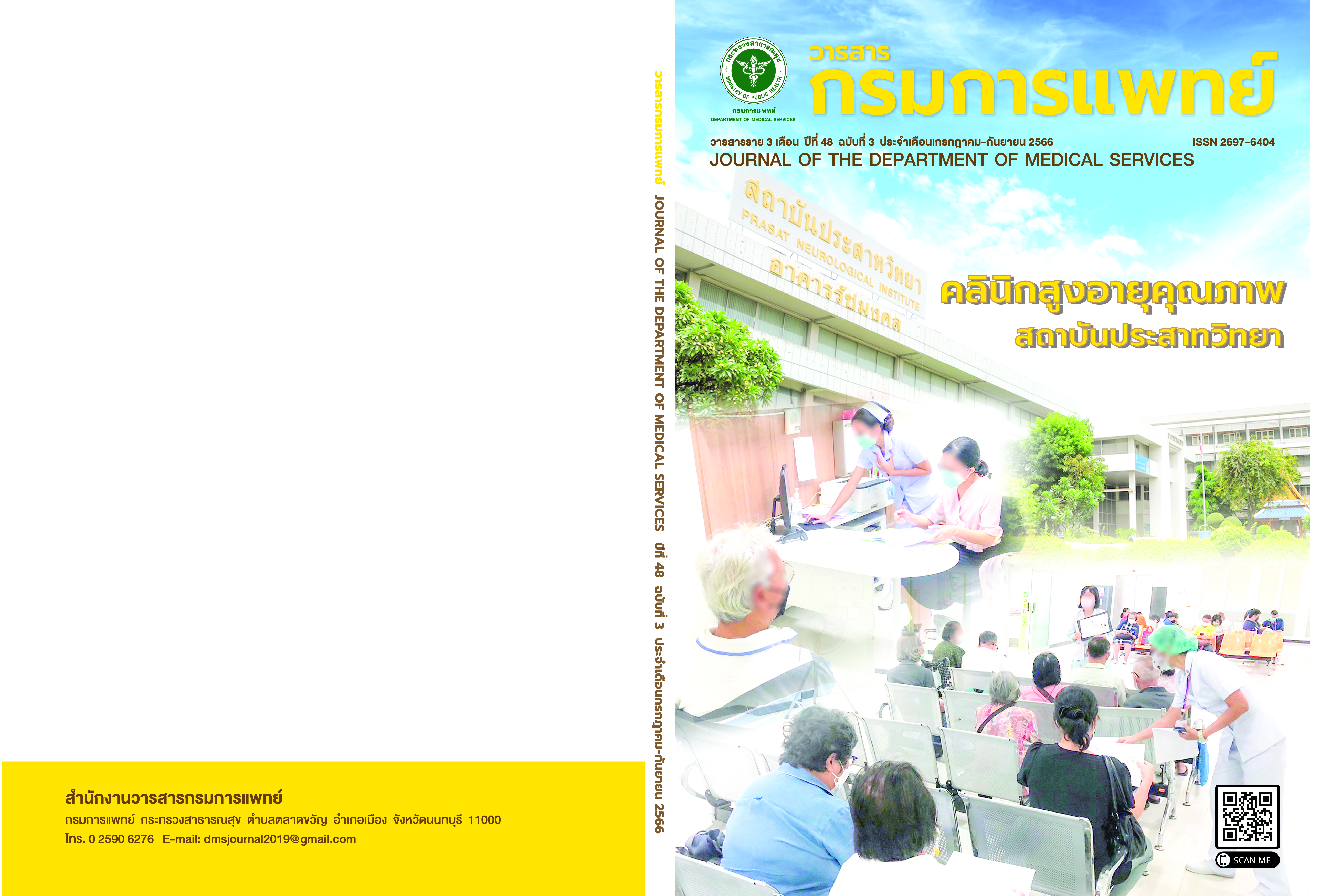The Effect of Development Clinical Practice Guideline on Preventing Endotracheal Tube Displacement and Skin Injury in Neonatal Intensive Care Unit, Nopparat Rajathani Hospital
Keywords:
Prevention, Unplanned extubation, Skin injuryAbstract
Background: A recent routine practice guideline for nursing care of an intubated neonate in NICU uses a transparent adhesive plaster to prevent skin injury. However, we have found that unplanned extubation occurred at a higher rate in 2020 (29.1%). An updated practice guideline was revised. Objective: In this study, we aimed to compare the rate of unplanned extubation and skin injury between the updated practice guideline and routine practice guideline Method: A non-randomized intervention research with historical controlled was conducted by collecting data from 32 cases with routine guideline from October 1, 2020, to September 30, 2021.The other group’s data, consisting of 73 cases with the updated guideline, were collected from October 1, 2021, to September30, 2022. The data collected from both groups were baseline characteristics, disease, rate of unplanned extubation, skin injury and followed up to 72 hours after intubation. Multivariable rate regression and multivariable proportion difference regression were compared between 2 groups. Results: 105 cases were analyzed. Baseline characteristics, birth weights, birth asphyxia rate, duration of intubation and excessive salivation were different. When adjusted with statistical methods, updated guideline had a decrease rate of unplanned extubation from 100 times to 4.18 times per 100 hour of plaster applied time. (95%CI -0.48,36.59 time per 100 hours of plaster applied time) And rate of skin injury was decreased for 2.3% (95%CI -13.18,8.57) Conclusion: Updated practice guideline tends to decrease the rate of unplanned extubation and skin injury but there is no statistical significance. More participants are needed in order to establish the precise results.
References
Lucas da Silva PS, de Carvalho WB. Unplanned extubation in pediatric critically ill patients: a systematic review and best practice recommendations. Pediatr Crit Care Med 2010;11(2):287-94.
da Silva PS, Fonseca MC. Unplanned endotracheal extubations in the intensive care unit: systematic review, critical appraisal, and evidence-based recommendations. Anesth Analg 2012;114(5):1003-14.
Cosentino C, Fama M, Foà C, Bromuri G, Giannini S, Saraceno M, et al. Unplanned extubations in Intensive care unit: evidences for risk factors. A literature review. Acta Biomed 2017;88(5S):55-65.
Morii C. Prevention strategies for unplanned extubation in NICU : A literature review. Journal of Neonatal Nursing 2016;22(3):91-102.
Kampan P, Jampathong S, Kaewvichit N, Jaruseneenak P. Prevention of unplanned extubation in pediatric intensive care unit. pnujr 2020;12(1):25-35.
Ditsathawong R, Thongpong D. The development of clinical nursing practice guideline for prevention of accidental endotracheal tube extubation in neonatal intensive care unit at Nakhonphanom hospital. Nakhonphanom Hospital journal 2016;3(2):57-66.
Neves VC, Ribas CG, Miranda B, Bitencourt E, Koliski A, Cat M, et al. Effectiveness of a bundle to prevent unplanned extubation in a pediatric intensive care unit: A multidisciplinary approach. Pediatric Dimensions 2020;5:1-5.
Angkana J. The development of clinical nursing practice guideline for prevention of accidental endotracheal tube extubation in neonate intensive care unit at Mahasarakham Hospital. [Dissertation]. Khon Kean: Khon Kean University; 2014.
Meregalli CN, Jorro Barón FA, D’Alessandro MA, Danzi EP, Debaisi GE. Impact of a quality improvement intervention on the incidence of unplanned extubations in a PediatricIntensive Care Unit. Arch Argent Pediatr 2013;111(5):391-7.
Benjapornkulnji T. Benefit of the usage of T-model equipment for endotracheal tubes stabilization in neonate. Reg 11 Med J 2013;7(3):397-404.
Downloads
Published
How to Cite
Issue
Section
License
Copyright (c) 2023 Department of Medical Services, Ministry of Public Health

This work is licensed under a Creative Commons Attribution-NonCommercial-NoDerivatives 4.0 International License.
บทความที่ได้รับการตีพิมพ์เป็นลิขสิทธิ์ของกรมการแพทย์ กระทรวงสาธารณสุข
ข้อความและข้อคิดเห็นต่างๆ เป็นของผู้เขียนบทความ ไม่ใช่ความเห็นของกองบรรณาธิการหรือของวารสารกรมการแพทย์



